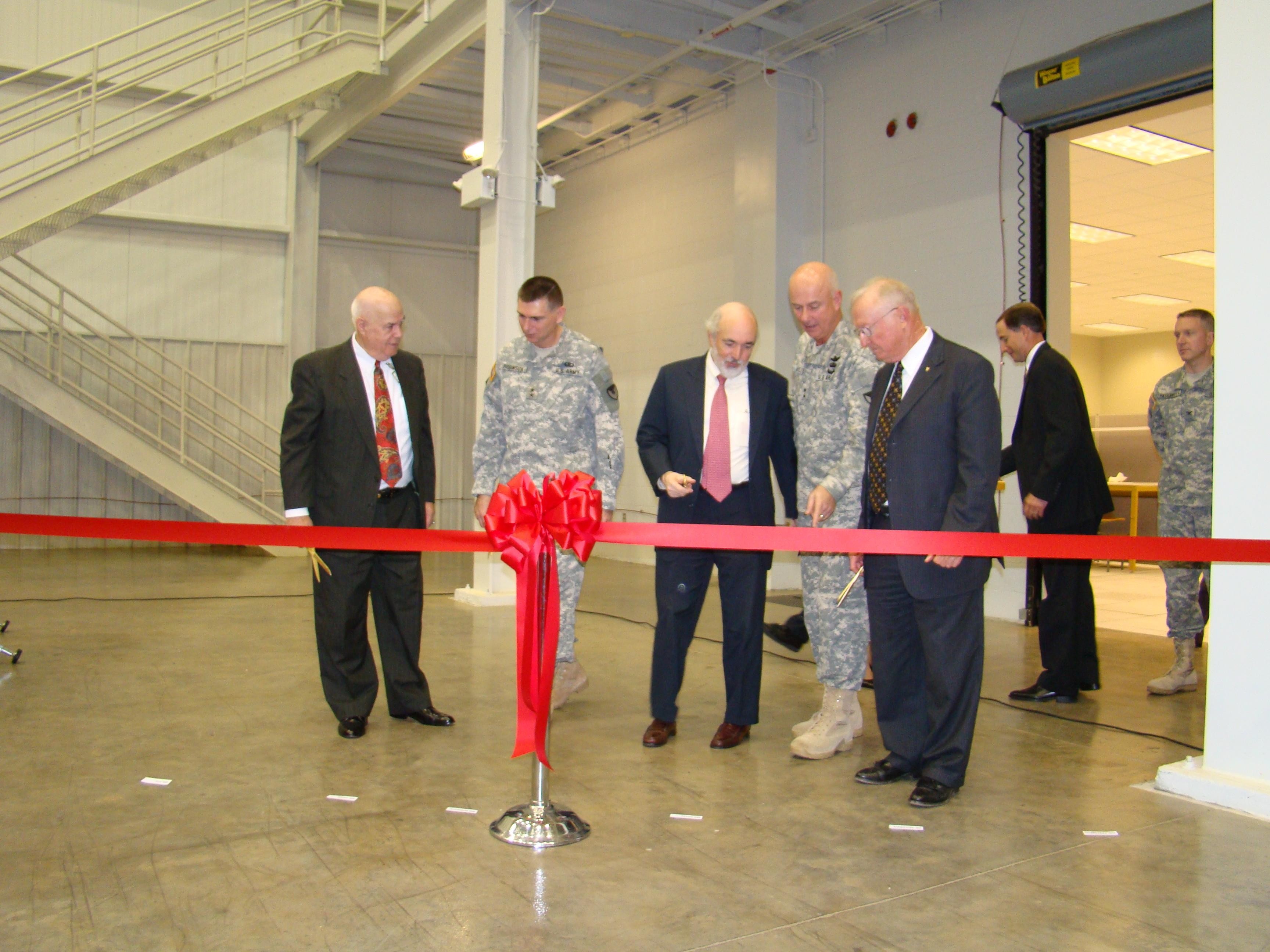Software engineering and development that help Soldiers train to fight with more lethality just got bigger and better.
More than 100 people celebrated the expansion of the new 78,800 square foot Software Engineering Directorate building during a ribbon cutting Sept. 29.
The annex was started in September 2006 and completed in July this year, with another building on the way. The new $19.6 million facility will expand the Army's capability to support aviation, unmanned air vehicles, and missile system projects, as well as provide a platform to conduct testing and development in all levels of the Army weapons systems life cycle.
What SED gives to the Soldier is the guts, said Maj. Gen. Jim Myles, commander of the Aviation and Missile Command.
"All the systems Soldiers use in combat have started from here," he said, crediting SED's part in the fight to the Global War On Terrorism at 35 miles from Baghdad.
Myles called the event a very special day. He lauded the Army for being the best in the world, and added, "It just gets better."
Before Soldiers deploy to the battlefield, they need the most realistic training environment available to help them prepare.
One of the most important elements that help them prepare to fight is the systems software that SED develops, verifies and validates. SED is responsible for supporting over 50 million lines of tactical and system support code and establishes the software sustainment environment that includes project specific hardware, software and documentation, and performs analysis, sustainment, configuration management, quality assurance, testing and fielding.
SED is the Army's watchdog that ensures all software configured into the systems are up to par with Army standards.
Dr. William Craig, SED director for the Aviation and Missile Research Development and Engineering Center, said that the department's growth parallels the dramatic increase in the Army's use of software systems.
Twenty-four years ago, Craig said, when the first SED building was built on the Arsenal, they used less than 100,000 lines of computer code when they worked on the Pershing II missile.
"Now we use more than 7 million lines of code."
As the Army relies more on unmanned aircraft systems that help keep Soldiers safe in the battlefield, Craig said software and simulation, and therefore SED, will only continue to grow in its importance.
Among many of the simulated systems that SED has worked on include training simulators for the Javelin, Common Remotely Operated Weapons Station, TOW missile, and the now very popular video game called America's Army that was launched in 2002.
People who play America's Army go through a variety of obstacle courses and fire weapons as if they were in a real convoy. It is the closest experience to actual soldiering that civilians can encounter.
Seated in the crowd at the ribbon cutting was Sgt. Tommy Rieman, one of the Army's heroes who is helping to popularize the America's Army's game.
Rieman is a recipient of the Purple Heart, Silver Star and the Army Commendation Medal with a "V" device for valor and was recognized in January 2007 by President Bush at the State of the Union address. He was shot in his chest and arms, and received shrapnel wounds in his legs when he and his squad were ambushed by more than 50 anti-American insurgents in Iraq in December 2003.
"The expansion of SED gives Soldiers even more opportunities to succeed in their mission," Rieman said.
Ten years ago, SED was small, said Maj. Gen. Fred Robinson, commander of the U.S. Army Research Development and Engineering Command. Now, with more than a thousand personnel working to improve the Army's capabilities in the fight, Robinson said that the software created at SED will translate to added capabilities in the battlefield.
"It's the software," he noted. "What used to take years to develop now only takes months.
"The amazing brilliance and talent to grow the right capability for our Army and for the future will translate into other capabilities," Robinson said.


Social Sharing